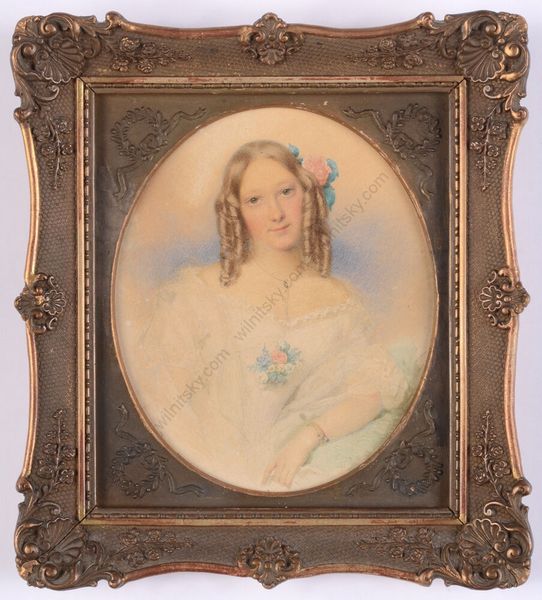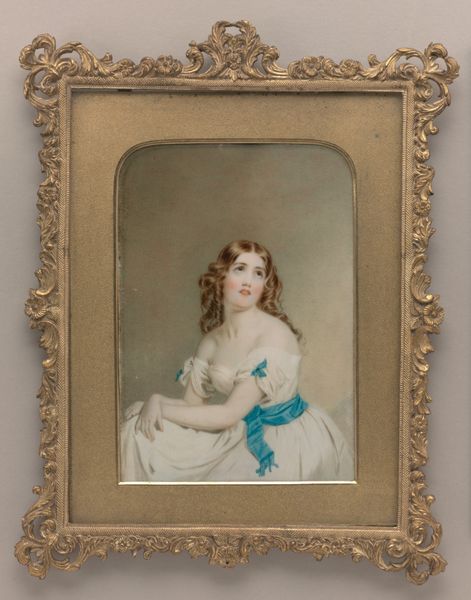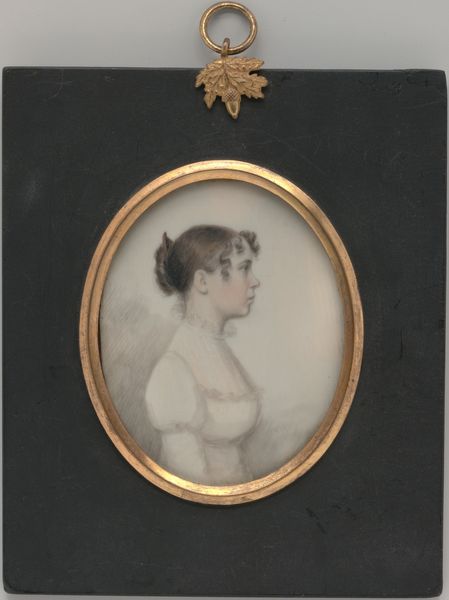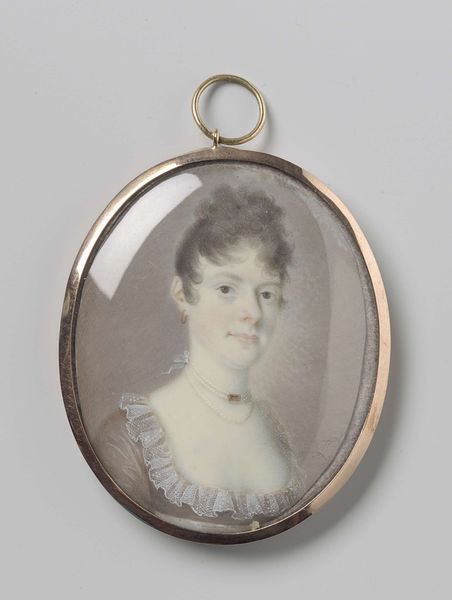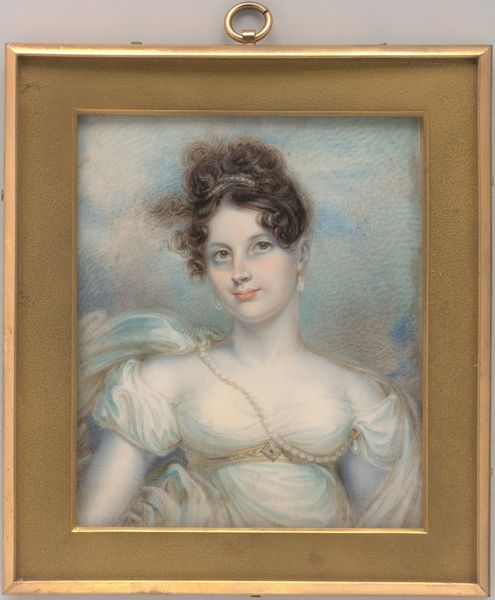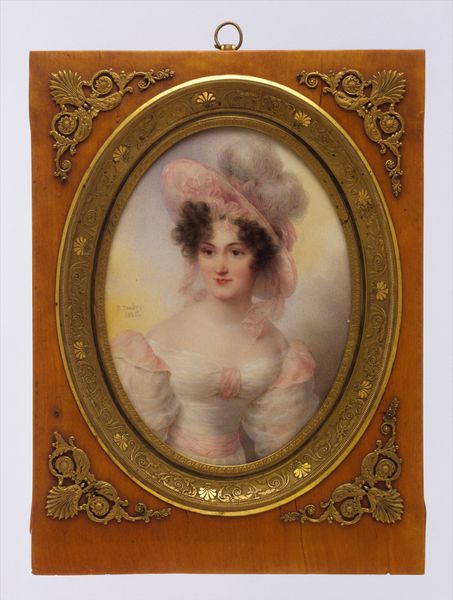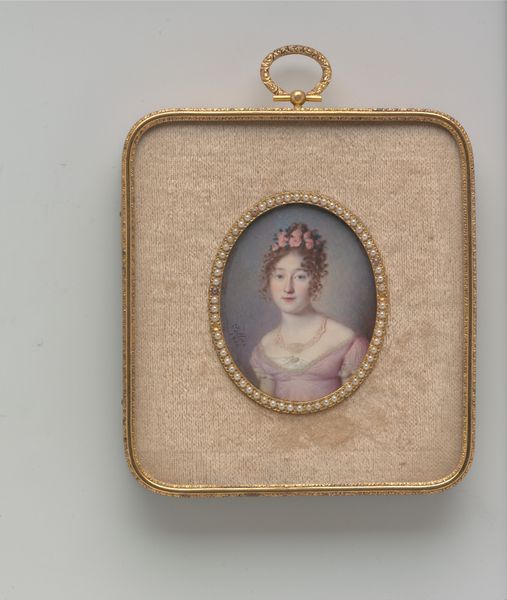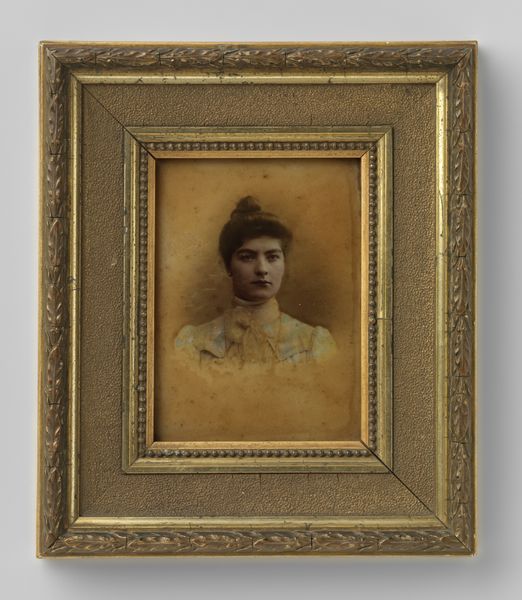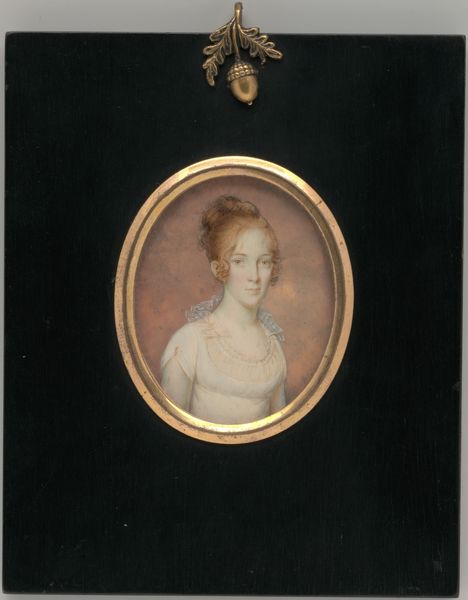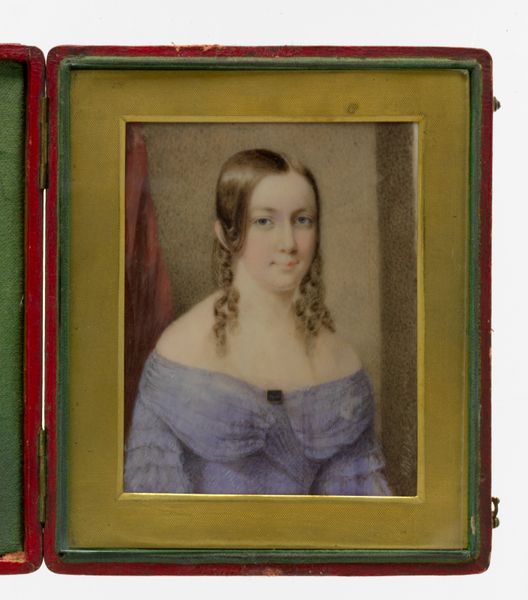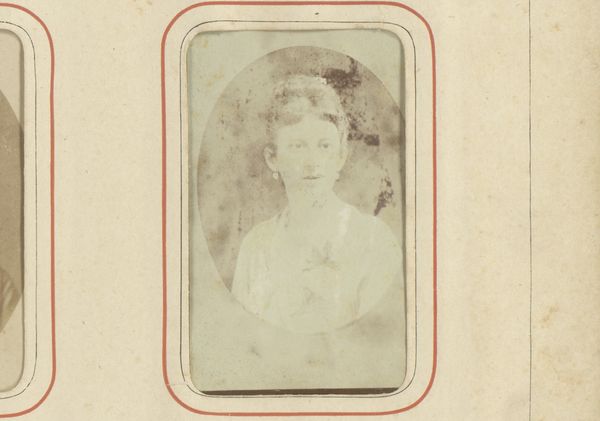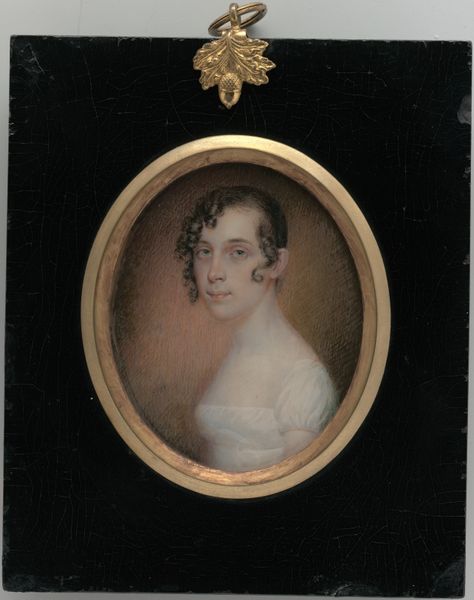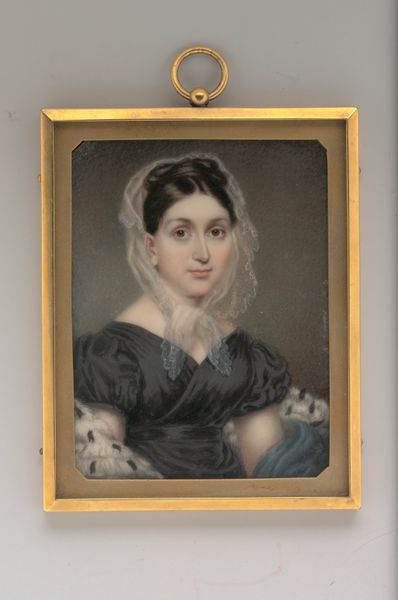
Mrs. Stephen Van Rensselaer III (Cornelia Paterson) 1807 - 1810
0:00
0:00
watercolor
#
portrait
#
neoclacissism
#
watercolor
#
romanticism
#
watercolor
Dimensions: Sight: 3 1/8 x 2 1/2 in. (7.9 x 6.4 cm)
Copyright: Public Domain
Curator: This exquisite watercolor miniature portrays Mrs. Stephen Van Rensselaer III, Cornelia Paterson, crafted by Robert Fulton between 1807 and 1810. Its Neoclassical style offers a glimpse into the life of a prominent woman of the era. Editor: My first impression is one of delicate serenity. The soft washes of watercolor give her an ethereal quality, and her pale dress against the slightly clouded background evokes a sense of gentle melancholy. Curator: Indeed. It is remarkable how Fulton utilized the watercolor medium to capture the subtle textures of her dress and the wisps of her hair. It is a demonstration of artistic skill to create such an effect while retaining the neoclassical influence in this piece. But also consider the socio-economic implications—miniature portraits were increasingly accessible to the growing merchant class, representing shifts in wealth and status. Editor: Yes, there is certainly a conscious projection of status but look also at her gaze. She stares straight out at the viewer, meeting our eyes. To me this seems to evoke the symbolism of self-possession, perhaps subtly challenging the traditional objectification of women in portraiture. Curator: I would counter that and see a display of luxury, note the way the soft lighting highlights the gold ornamentation in her frame and that small gem on her bust, she's definitely displaying her position in society. Editor: Even the style, rooted in Neoclassicism, carries its own cultural baggage. By linking her image to classical ideals of beauty and virtue, the artist and subject make claims of enlightenment. This artistic decision reinforces her societal standing while inviting viewers to connect with historical narratives of nobility. Curator: I agree. But for me, it really underscores how such delicate artworks acted as tangible markers of affluence, part of the domestic interior, designed to assert and reinforce specific social positions in a tangible and lasting form. Editor: A wonderful intersection of art, symbolism and materials. It provides ample food for thought regarding her inner self, but more broadly speaks of wealth, status and her place within history. Curator: Yes, looking at its material composition really opens up discussions of status, artistic intention, labor practices, and social class from the period, it definitely speaks volumes beyond its demure, neoclassical aesthetic.
Comments
No comments
Be the first to comment and join the conversation on the ultimate creative platform.
